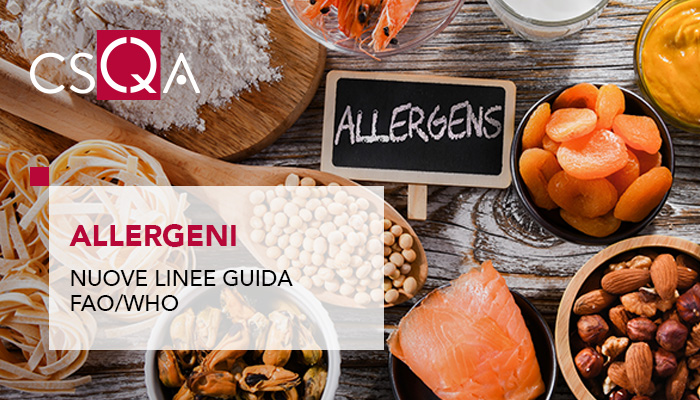
The presence of food allergens in prepackaged foods plays a key role in the protection of allergic individuals, as no preventive clinical treatment is currently available. Although food allergen immunotherapy has recently shown promising results, avoiding allergenic foods for sensitive individuals remains the only option to prevent allergic reactions.
Since 1993, allergens in food have been taken into consideration by the Codex Alimentarius Commission (CAC) on several occasions. In 1995, FAO organized a technical consultation (FAO, 1995) to arrive at the identification of eight foods or groups of foods that cause allergies, included in 1999 in the General Standard for the Labeling of Packaged Foods (GSLPF) (section 4.2.1.4) (FAO and WHO, 2018a):
- cereals containing gluten, namely wheat, rye, barley, oats, spelt or their hybrid strains and products thereof
- shellfish and related products
- eggs and egg products
- fish and fish products
- peanuts, soybeans and derived products
- milk and derivatives (including lactose)
- nuts and nut products
- sulfite in concentrations equal to or greater than 10 mg/kg.
In 1999, following the FAO technical consultation, the WHO convened a Panel dedicated to food allergens which elaborated a series of recommendations to be included in the list of the Codex Committee on Food Labeling (CCFL) (FAO and WHO, 2000).
Studies
Starting from these considerations, three main areas have been identified as follows:- Task 1 - Review and validation of codex Alimentarius priority allergen list through risk assessment
- Task 2 - Review and establish threshold levels in foods of the priority allergens
- Task 3 - Review and evaluate the evidence in support of precautionary labelling.
- cereals containing gluten
- shellfish and related products
- eggs and egg products
- fish and fish products
- milk and derivatives (including lactose)
- peanuts
- sesame
- nuts (almonds, cashews, hazelnuts, pecans, pistachios and walnuts).
Task 1 - Review and validation of codex Alimentarius priority allergen list through risk assessment →
You can also consult a short meeting report →
The publication relating to Task 2 has recently been made available, with the aim of providing scientific opinions on the review and establishing threshold levels in foods for priority allergens. Knowledge of the minimum doses is, in fact, a fundamental requirement for assessing the risk of allergens. After extensive discussion, the expert committee reached agreement on the reference doses (RfD).
Task 2 - Review and establish threshold levels in foods of the priority allergens →
The summary report can be downloaded here →
As regards Task 3, only the summary document is currently available →
(Source: Bruna Moroni, https://www.foodandtec.com/ )